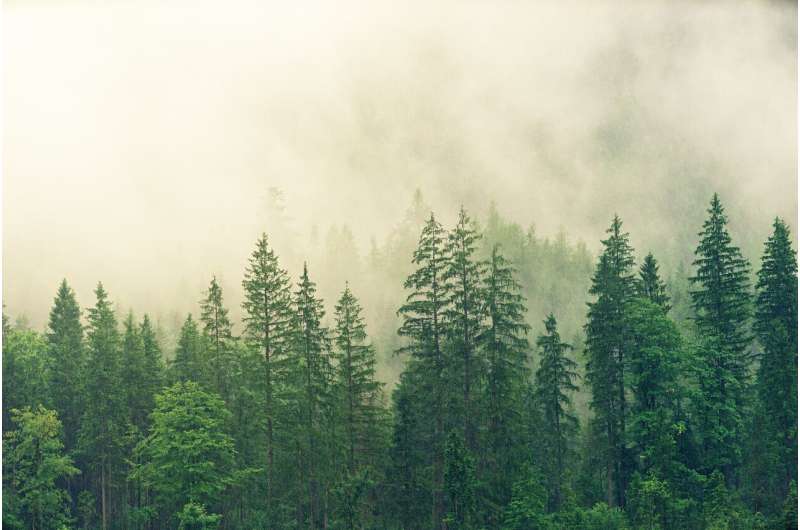Credit: CC0 Public Domain
A recent study by the Natural Resources Institute Finland (Luke), the Russian Academy of Sciences and the University of Eastern Finland examined the profitability of continuous cover forestry (CCF) in peatland forests. In a mature spruce-dominated peatland forest, CCF may be a financially more profitable option than conventional rotation forestry (RF).
This study examined different forest management options in a mature relatively fertile Norway spruce-dominated peatland forest, where stand was composed of trees of different ages and sizes.
Effects of different management options for growth of forest trees were simulated using the EFIMOD process model, which was tested to produce growth estimates in line with values measured in thinned Norway spruce-dominated peatland forests. The interval and intensity of selection cuttings were varied in the simulations so that there were a total of 28 different CCF management options. These produced a comprehensive overview of how different selection cuttings affect the profitability of forest management in peatland forests. An RF option in line with silviculture recommendations was used as a benchmark in the simulations.
According to the research results, mature Norway spruce-dominated peatland forests seem to be ideal for CCF. The simulations showed that the profitability of CCF was higher than that of RF. The results can largely be explained by CCF not accumulating any silviculture expenses, because regeneration was natural and there was no need for soil improvement or tending of a sapling stand, unlike in RF. What is more, RF required decades before harvest revenues were obtained after forest regeneration, reducing profitability.
The best financial results were achieved when the thinning interval was 15 years and trees were thinned so that the post-harvest basal area was 10 square meters per hectare (90–100 cubic meters per hectare). Many of the management options for selection cuttings produced almost equally high financial results.
"These results show that forest owners have plenty of thinning options to choose from without any significant decreases in their financial results. A discount rate of three percent was used in the calculations. In addition, calculations were made using interest rates of one and five percent," says Artti Juutinen, research professor at Luke.
No ditch network maintenance (DNM) operations are needed if enough trees are left in the forest
The study also examined the need for remedial ditching. According to calculations, no DNM operations are needed in CCF, provided that enough trees are left in peatland forests to maintain drainage through evaporation. The basal area of trees should be more than eight square meters per hectare. As a result, the water level remains favorable through evaporation, without rising too high to interfere with tree growth. In other words, the water level remains at over 35 centimeters depth from the ground level during the latter half of the growth period.
"The water loading of CCF is probably smaller than that of RF, because there is no need for DNM, which causes loading in watercourses. The CCF also prevents the water level from rising too close to the surface and from lowering too deep, factors that increase greenhouse gas emissions in peatland forests. Therefore, the impact on climate warming is lower," Juutinen says.
More information: Artti Juutinen et al. Profitability of continuous cover forestry in Norway spruce-dominated peatland forest and the role of water table, Canadian Journal of Forest Research (2020). DOI: 10.1139/cjfr-2020-0305
Provided by Natural Resources Institute Finland
























